Ledigos
Leaving Carrión de Los Condes, we had to prepare for a 17K stretch with no water (or food, or restrooms, or anything, really). The weather was chilly and overcast, which was perfect for the exposed terrain. There was something beautiful about the fields of golden wheat against the dark, gloomy skies.
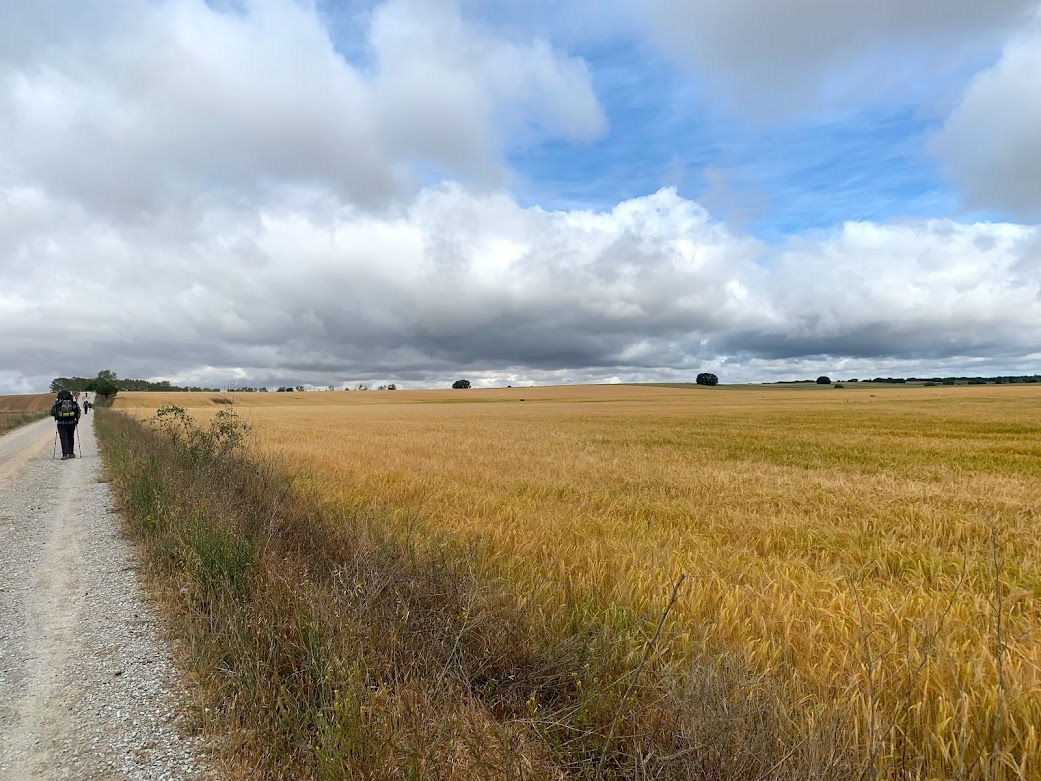
The terrain was fairly flat, but my joints were stiff and my feet felt heavy. Nicole, Andy, and I spread out, each at our own pace. It was a perfect time to space out and drift into your thoughts.
When we arrived in Ledigos, we found a small restaurant and albergue with a nice patio so we decided to have lunch. After the meal, we were comfortable and didn’t feel like continuing for the day, so we decided to stay there for the night.
I loved making progress and seeing the mile markers growing smaller. But I was always happy to deviate from the plan in favor of an early day with ample time for relaxing.
Since we had a late lunch, we opted for wine and dessert as dinner—oven-roasted golden apples with cinnamon, nutmeg, and honey. It reminded me of the apples my great-grandmother used to make for my sister and me when we were kids.
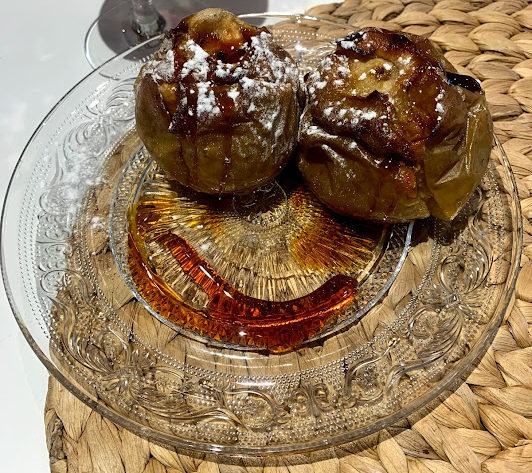
A fellow pilgrim, a man from Germany that we met at the place with the singing nuns, asked to join our table. We welcomed him and graciously accepted his offer of a second bottle of wine. We stayed up late, sharing stories and philosophizing.
He told us that he had done the Camino multiple times, the first time after leaving a troubled and unhealthy home life as a teenager. We had seen him on the trail helping another pilgrim, a woman who was pulling a wagon with several young children in it. The night before, we saw him playing with the kids in the garden area of the albergue while the mom washed some clothes and relaxed a bit.
We asked him if he knew her, as we learned that she was German as well. No, he said, he didn’t know her, he just knew that she needed help.
I don’t know if it was the nostalgia of the roasted apples, the warmth of the second bottle of wine, or the selfless, serving heart of this pilgrim, but that night I felt a fullness in my spirit that I hadn’t felt in a long time.
Running of the bulls! (Kinda)
We awoke the next morning feeling that second shared bottle of wine. The Meseta sun had no mercy on us as we set out.
As we walked toward Sahagún, we kept seeing these small dwellings that looked like hobbit homes. We learned that they were bodegas that have been used for over 500 years to store wine and food. Like ancient, earthen pantries and wine cellars.
Next, we passed through a small town whose trees had been yarn bombed. It added an unexpected touch of whimsy to our walk.
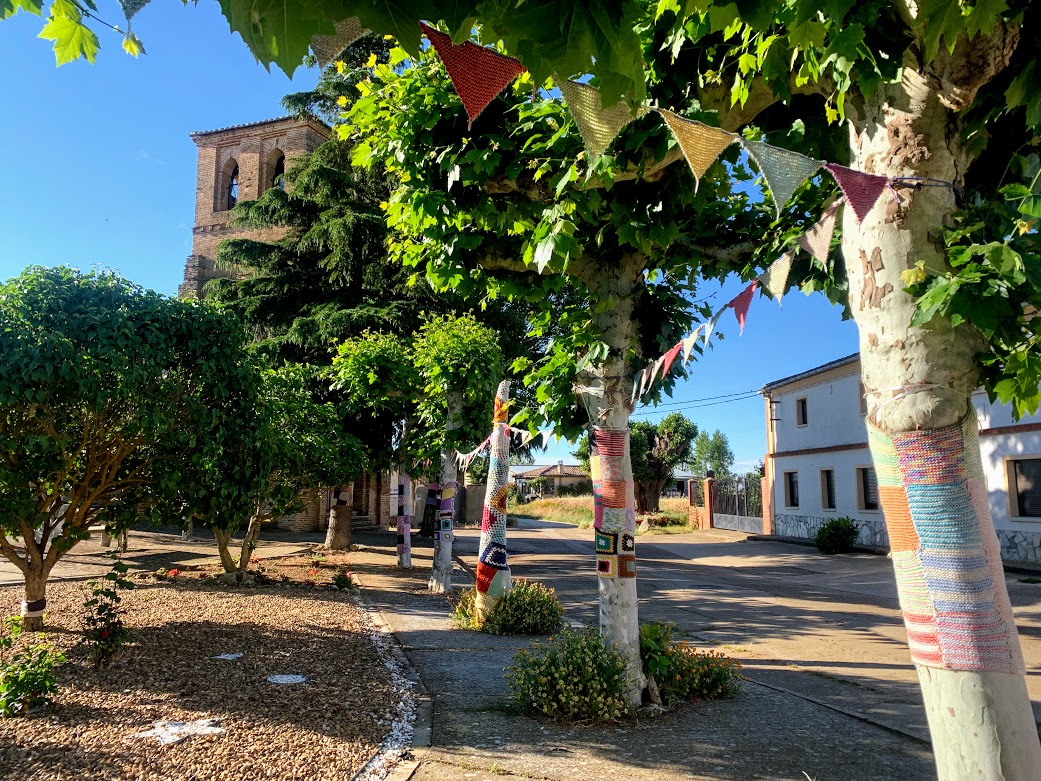
As we neared Sahagún, we unknowingly passed through the geographical halfway point of the Camino. The mileage didn’t exactly add up, so we weren’t expecting to celebrate this milestone so soon.
When we got to the town of Sahagún, our stop for the night, we learned there was a town festival going on that night. They were going to be having their own running of the bulls to kick off the summer season. What a treat!
We got settled into our albergue, a quiet place run by Benedictine monks. Then went to the local church to take care of some pilgrim business: halfway Compostelas. These are the personalized certificates that state your accomplishment. That way, if something prevents you from completing your Camino, you at least have documented proof that you made it halfway.
Halfway!
The emotions moved between “wow, already?” and “wow, we’re ONLY halfway?!”
Still, we relished our accomplishment. It felt good to have tangible proof of our progress.
We made a stop at the local grocery store and bought some empanadas and a bottle of wine to share before the evening’s festivities kicked off. We ate and drank in the albergue courtyard before Nicole left us to attend mass. We stayed in the courtyard, doing some yoga and journaling.
As the kickoff time neared, we walked back toward the middle of town to meet up with Nicole. We found a spot along the street, safely behind some fence paneling, and waited. We heard what sounded like several marching bands, then we saw groups of locals in matching T-shirts.
The streets were filled with marching bands and coordinated outfits, dancing and shouting. It was unlike anything I have ever seen before.
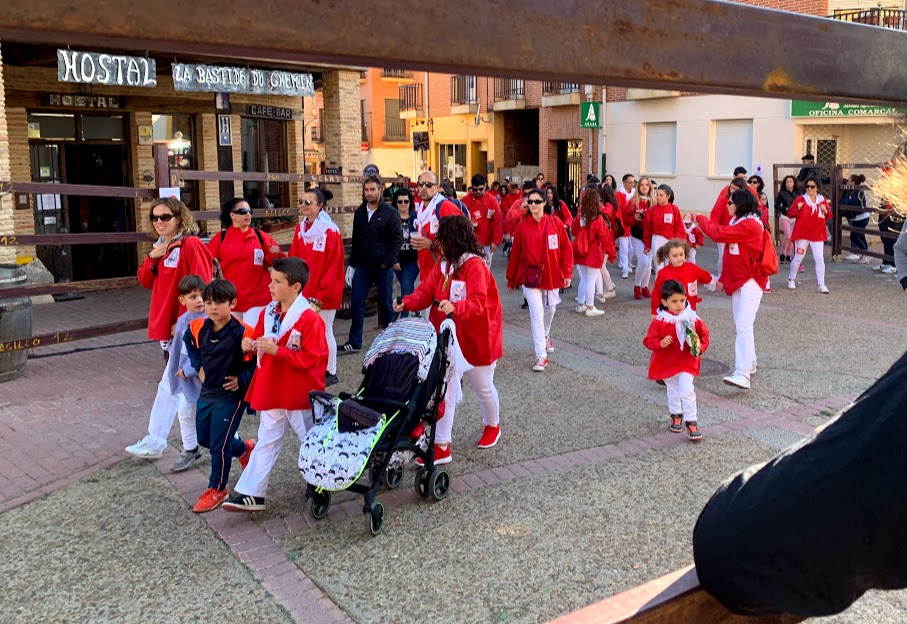
Finally, there was a sound signaling the release of the bulls from somewhere down the block. We waited, wide-eyed and tense.
The bulls were heralded by a group of young local men, drunk on wine and youthful immortality.
We saw the young men turn the corner and run toward where we were standing. Then we saw the bulls.
They came running around the corner, their hooves struggling to keep traction on the pavement. Then a couple of them crashed right into the panel we were standing behind. I couldn’t help but shriek, even though I knew I was safely out of reach of horns or hooves.
They continued up the street toward the arena in town as more marching bands and dancers filled the street.
We followed the crowd but I was apprehensive. I knew what happened in the arena in traditional bullfighting and it was something I didn’t care to see.
Instead, what we saw was a continuation of drunken bravado as the young men chased and were chased by the bulls in the arena. No gore on either side, thankfully.
Happy to have been able to witness such a cultural event, we left the arena and went out in search of a pilgrim menu for dinner.
That night as we were laying down in our bunks to sleep, we were startled by a loud crack, followed by an explosion. Fireworks. And then the marching bands started up again. Nicole and I laughed as we rummaged around to find our earplugs. Somehow, Andy slept through the ruckus.
Welcome to fiesta season in Spain.
El Burgo Ranero
We awoke early the next morning, a little groggy from the rowdy night but ready to get on the trail. As we moved through town, we could tell that many locals were still awake from the night before. We found a cafe at the edge of town where we ate some cold Spanish omelets and lattes.
We saw a couple of locals come in that were making the switch from red wine to coffee before they started their day. No wonder they have to take a siesta in the middle of the day, I thought. These folks know how to party and they’re not going to let their day jobs interfere with their fun.
Luckily, the day’s weather was nice and cool. This part of the Meseta was still pretty barren and shade was rare. We read in one of our guidebooks that the buildings in this area are unique because they are made of clay, rock, and straw. No trees, no wooden buildings.
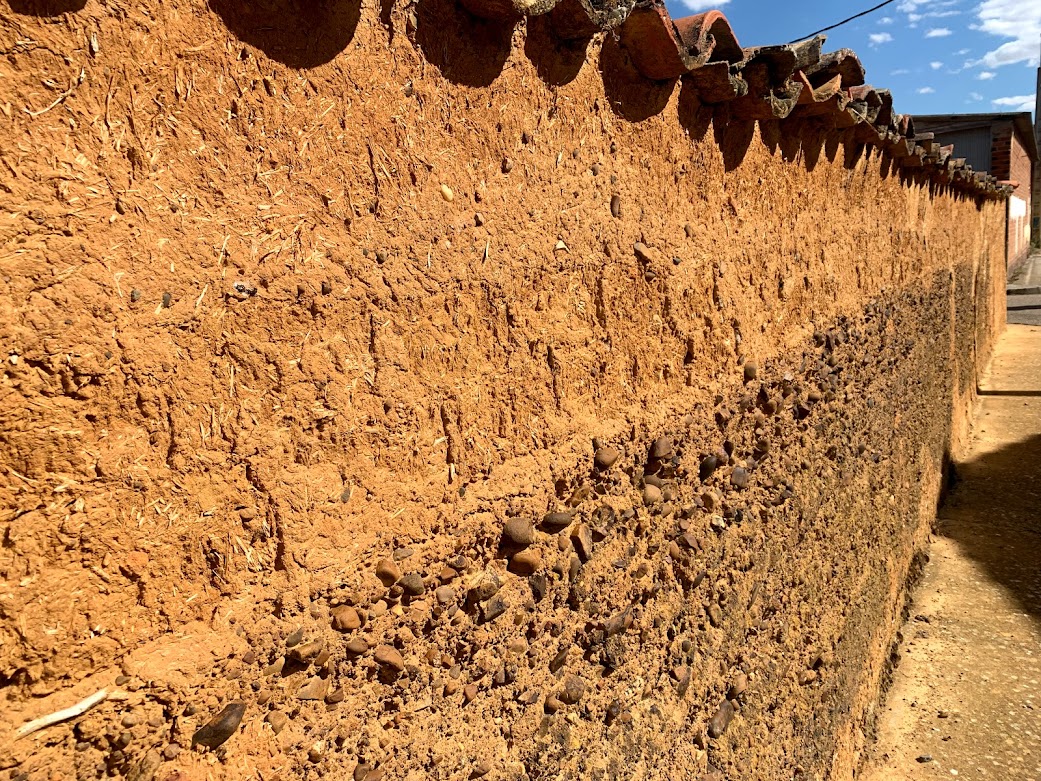
Our stop for the day was in the tiny town of El Burgo Ranero. We found one of the two albergues in town and took off our packs to wait with a handful of other pilgrims. We waited for almost two hours, calling all the numbers listed on the door and in the guidebooks.
We were equal parts hopeful and exhausted and just didn’t want to leave to find another option.
Finally, the hospitalero (a volunteer who runs an albergue) showed up. Our patience was rewarded with a private room for the three of us.
The room was oddly cold so Nicole and I both curled up in our respective sleeping bags and slept until dinner. When we awoke, we went to to the restaurant next door to refuel our bodies with lots of carbs, some protein, and a shared bottle of wine. Then, back to the room and back into our cozy sleeping bags to rest up for another day.
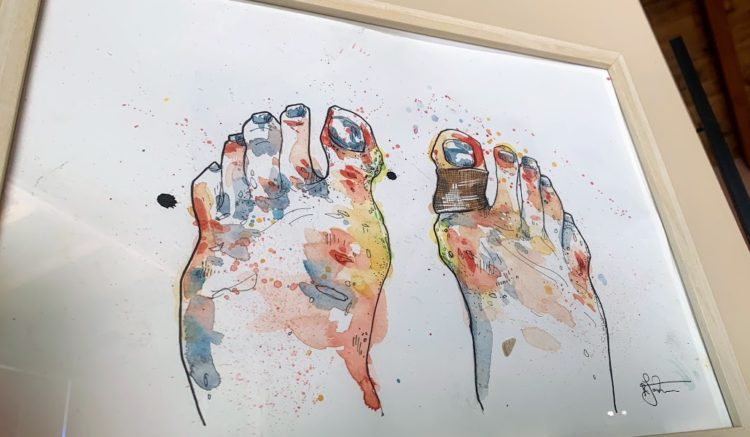
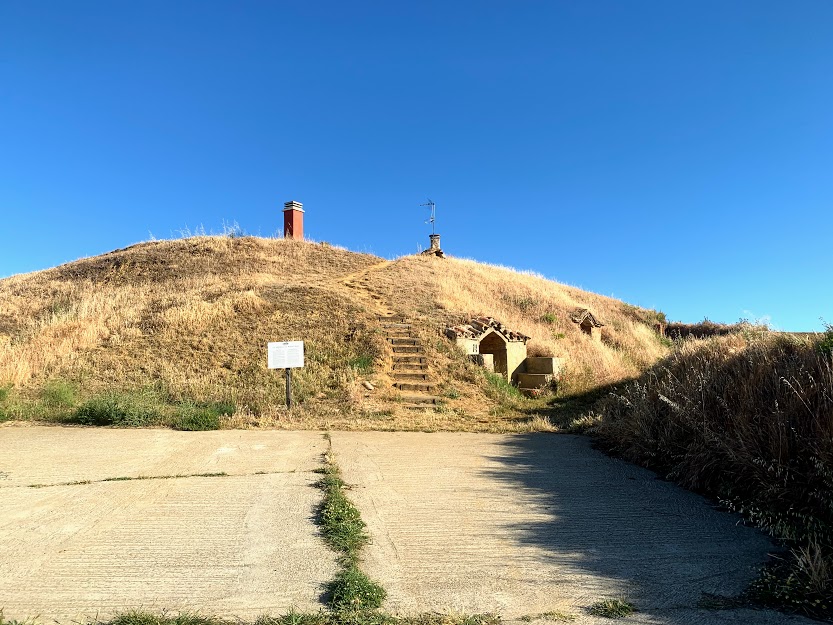
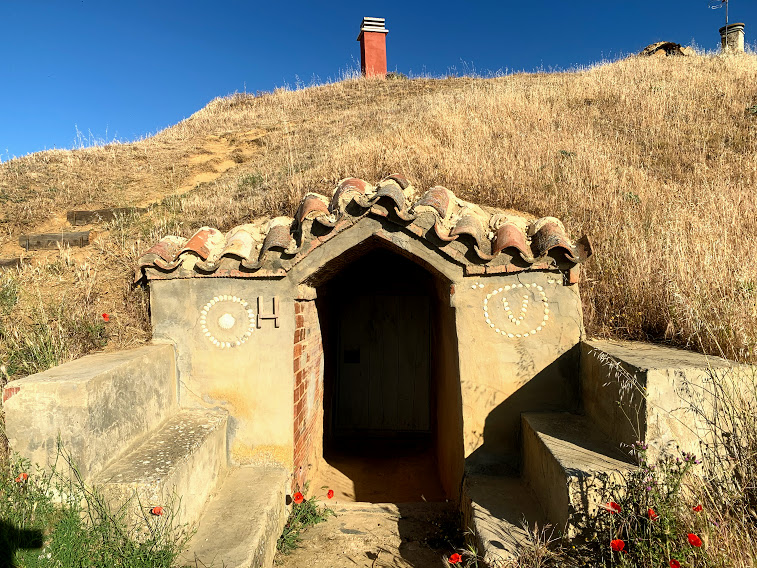
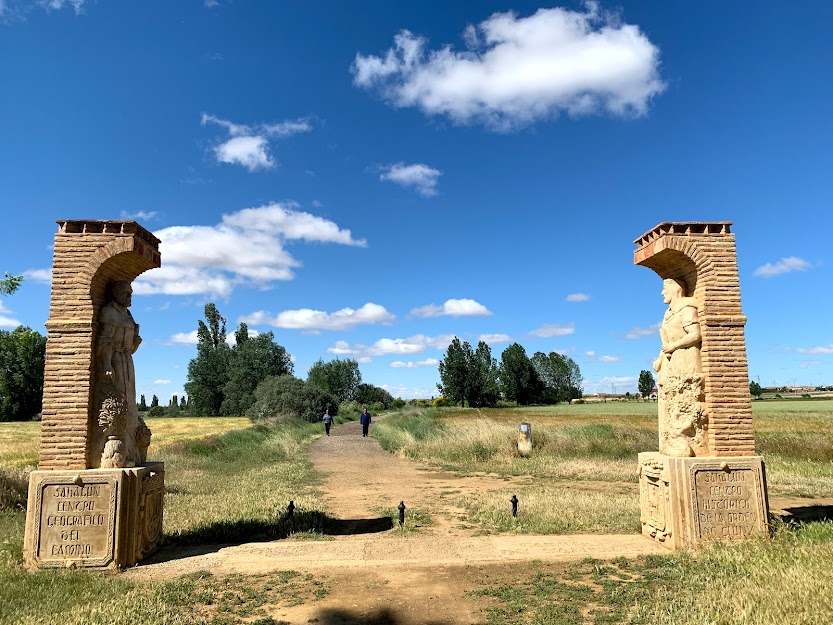
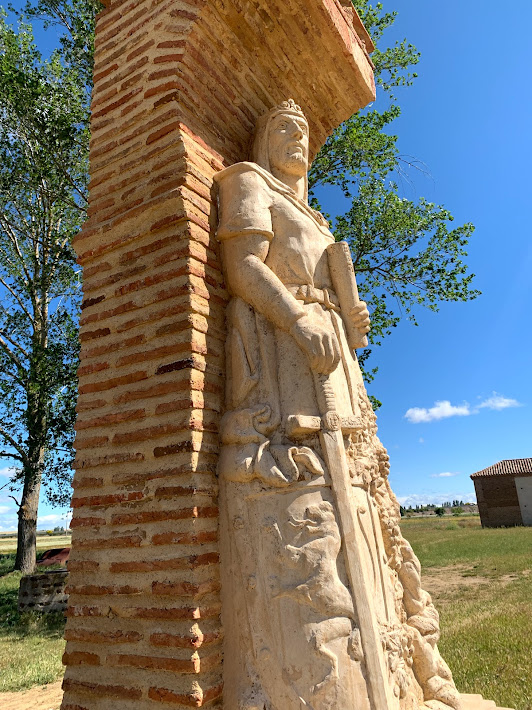
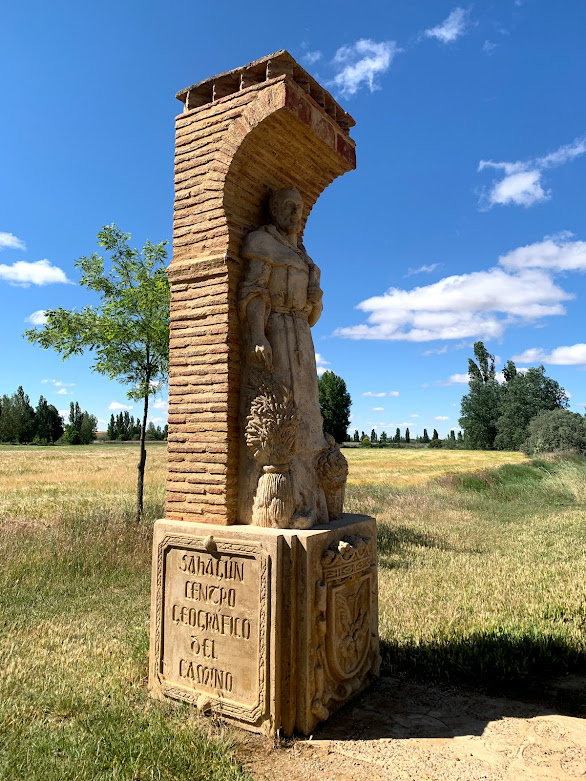
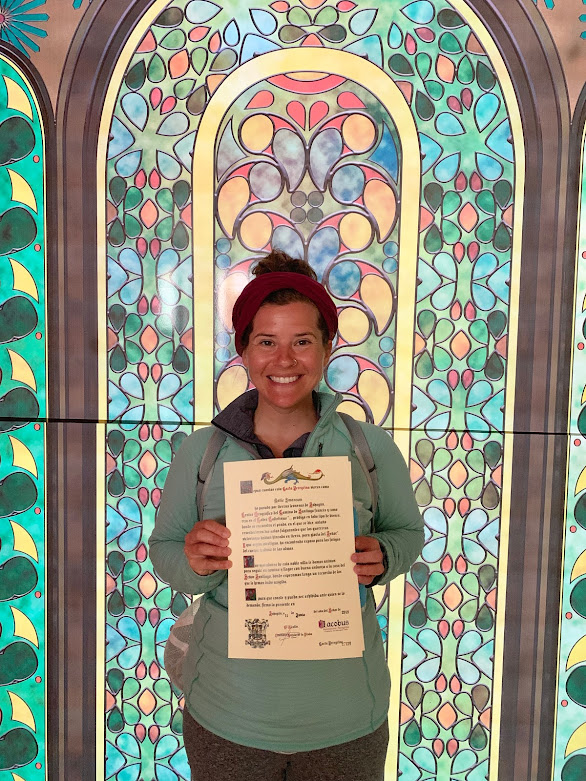
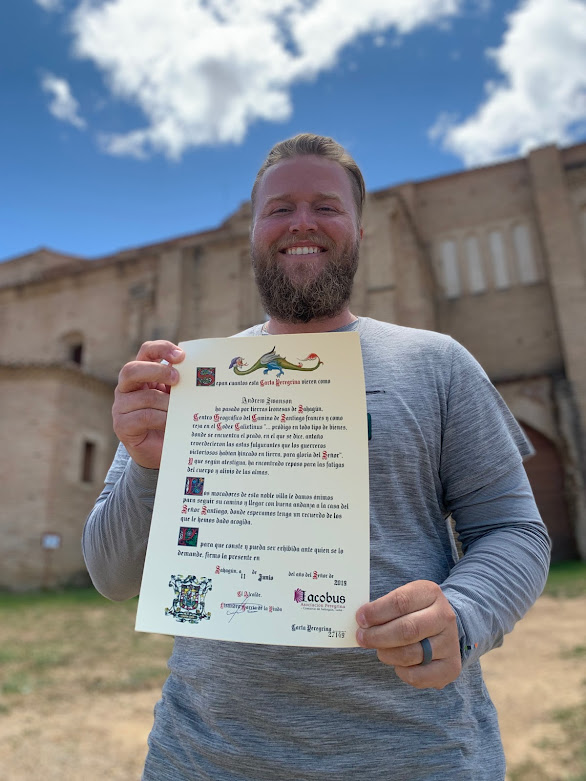

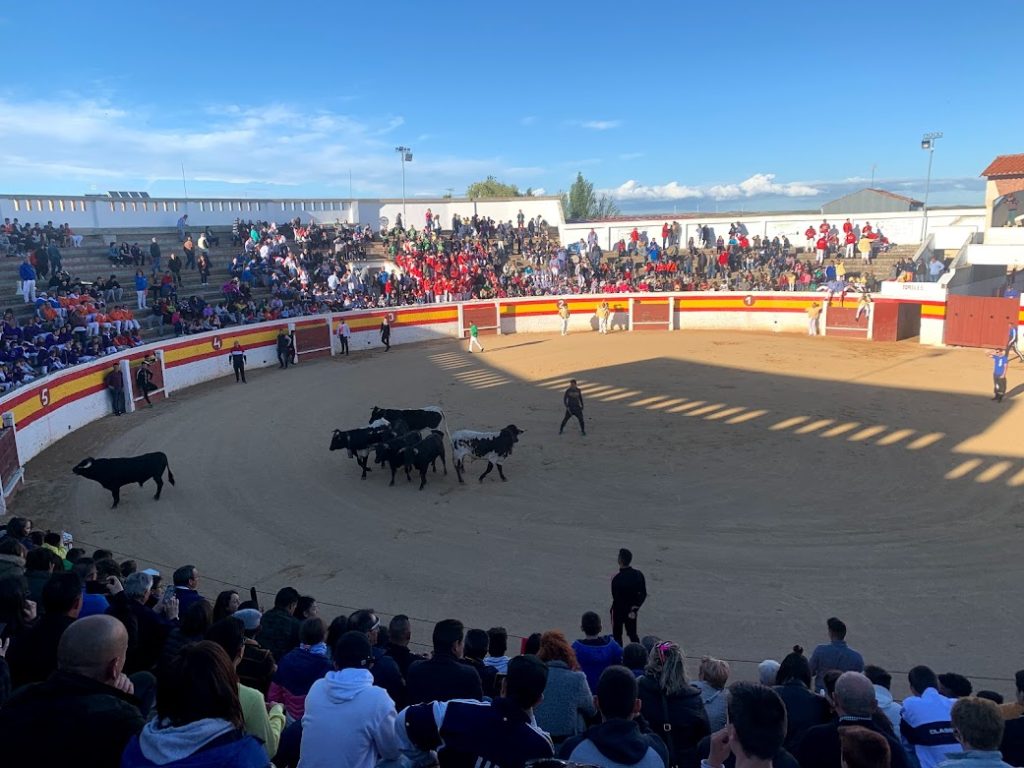
Another life experience
Love the yarned trees! And running of the bulls….and … all of it!!! ????
a fascinating tale continues!
Where did you get that watercolor of Andy’s feet? 😉
Where was the piece of art you used as the picture of this post?
Hello Michelle. That painting was in an albergue in Ledigos, Spain. It’s a beautiful representation of the broken feet of less fortunate pilgrims.